Phylums & Classes For The Animal Kingdom
1/93
Earn XP
Description and Tags
nooooo I gotta run a retractionnnn, I got to stick with the facts, I gotta only tell the reeeeaal story, I've gotta THINK before I write
Name | Mastery | Learn | Test | Matching | Spaced |
|---|
No study sessions yet.
94 Terms
How do amoebocytes function in the digestive process of a sponge?
receive nutrients passed on from collar cells, break down organic material, distribute digested nutrients to other cells via diffusion
How do choanocytes function in the digestive process of a sponge?
create water currents to pull water w/ flagella, trap & engulf food particles, digest some food for their own use, pass digested nutrients to amoeboid
What are the benefits of alternation of generations between the medusa & polyp stage?
enhances reproductive success & adaptability;
polyp stage allows for rapid growth asexually & colony formation in favorable environments
medusa stage allows for sexual reproduction leading to diversity & mobility for organism dispersal
What is the mode of transmission of the parasitic worm Ascaris?
ingestion of fertilized eggs (in soil through feces)
What is the life cycle of the parasitic worm Ascaris?
eggs ingested —> eggs reach & activate in stomach —> larvae hatch in intestine —> larvae migrate to liver —> larvae coughed up & swallowed —> larvae return to intestine & mature —> adult worms reproduce sexually & lay eggs —> eggs passed out of body as feces —> repeat
Describe the life cycle of a pork tapeworm.
dormant inside pig muscle tissue —> contracted through undercooked pork —> ingested cyst (tapeworm larval stage) activate in stomach —> scolex (head) use hooks & suckers to attach to intestinal wall —> produce numerous body segments (proglottids) —> reproduce sexually via cross-fertilization —> fertilized proglottids pass out as feces —> pigs ingest contaminated feces
What is the muscular foot in a mollusk’s body?
versatile organ used for locomotion (gastropods: snails, slugs), digging (bivalves: clams, mussels), or modified into tentacles for predation (cephalopods: squid, octopus)
What is the visceral mass in a mollusk’s body?
central body region that houses internal organs responsible for digestion, circulation, respiration, & digestion
What is the mantle in a mollusk’s body?
outer protective layer responsible for shell secretion & assist in respiration
4 major characteristics that all chordates must possess:
notochord, dorsal hollow nerve chord, pharyngeal gill slits, muscular post-anal tail
What are Porifera?
the simplest group of animals: porous, survive by filter feeding, no organized tissues or organs, use asexual & sexual reproduction
What are Cnidaria?
named after stinging cells on tentacles; 3 main classes (scyphozoa, anthozoa, hydrozoa); soft bodied, incomplete digestive system (single opening), predators, no circulatory system, utilize diffusion for gas exchange, no true skeleton (jellyfish bell —> hydraulic skeleton, coral —> secrete communal exoskeletons forming reefs), muscle fibers (no true muscles), nerve net, sexual & asexual
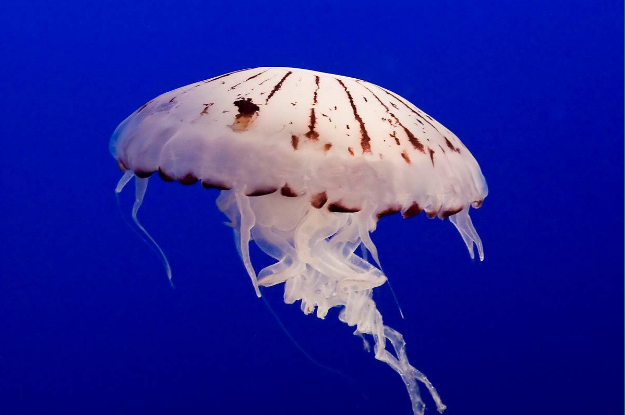
Scyphozoa
class of phylum cnidaria; “true jellyfish”, have dormant medusa stage, usually no major polyp stage
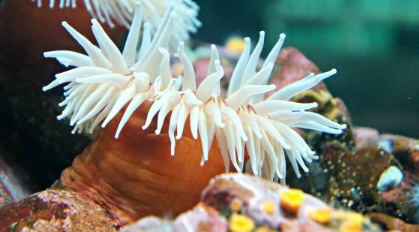
Anthozoa
class of phylum cnidaria; includes sea anemones & coral animals (secrete calcium carbonate —> reefs); typically one dominant or sole polyp stage
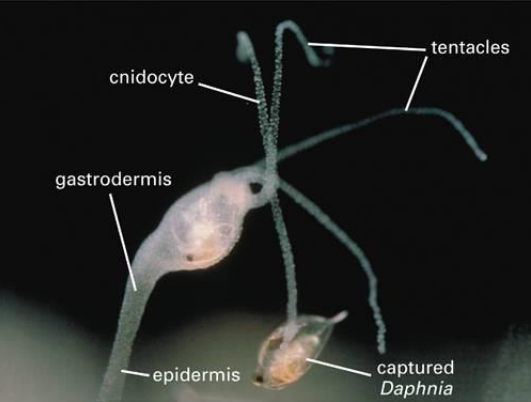
Hydrozoa
class of phylum cnidaria; includes obelia & hydra (freshwater, only polyp stage, asexual & sexual) species; most alternate between polyp & medusa in life cycle (alternation of generation),
What are Platyhelminthes?
AKA flatworms; 3 main classes (turbellaria, trematoda, cestoda); all 3 germ layers present, acoelomates, flat bodies, incomplete digestive system (single opening), no circulatory system, gastrovascular cavity, protonephridia, diffusion, possess muscles (longitudinal, circular), anterior ganglia, eye spots, auricles, mostly hermaphrodites, parasitic & free living
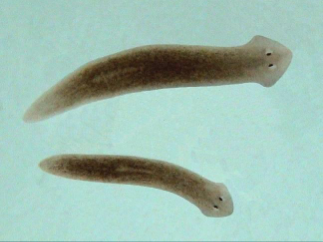
Turbellaria
class of phylum platyhelminthes; free-living flatworms (non-parasitic), scavengers, ex. planarians
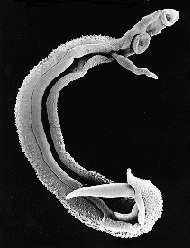
Trematoda
class of phylum platyhelminthes; parasitic flatworms (AKA flukes), usually have separate sexes, exs. liver fluke, blood fluke
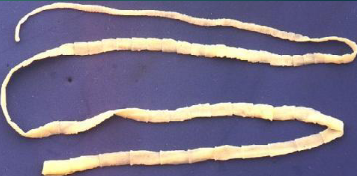
Cestoda
class of phylum platyhelminthes; parasitic flatworms (AKA tapeworms), hermaphroditic, exs. pork tapeworm, beef tapeworm
What are Nematoda?
AKA roundworms; all 3 germ layers, pseudocoelom, complete digestive tract, varied nutritional strategies (scavengers, plant root feeders, parasites), no circulatory system, diffusion, protonephridia, usually no skeletal system (some parasites have protective cuticle), longitudinal muscles, anterior ganglia, reduced nervous system in parasites, sexual reproduction
What are Annelida?
AKA segmented worms; 3 main classes (oligochaetes, polychaetes, hirudinea); coelomate, complete digestive tract, crop, gizzard, closed circulatory system, diffusion, some have simple gills, metanephridia, anterior brain (cerebral ganglia) & ventral nerve cord
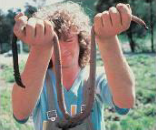
Oligochaeta
class of phylum annelida; hermaphroditic, ingest soil & digest organic material, ex. earthworms
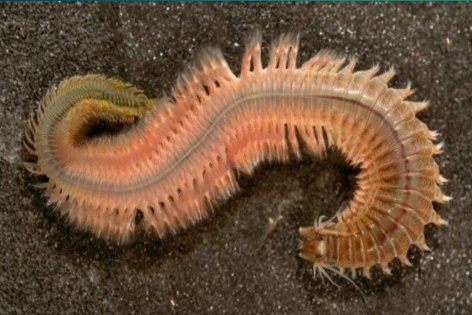
Polychaeta
class of phylum annelida; marine annelids (clamworms & sandworms), mostly separate sexes, can be asexual (budding, fragmentation), have jaws, scavengers & predators
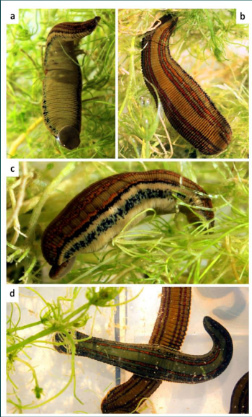
Hirudinea
class of phylum annelida; external parasites, separate sexes, only sexual, have anticoagulants & anesthetics in saliva (used medically), ex. leeches
What are Mollusca?
AKA mollusks; 4 major classes (polyplacophora, gastropoda, bivalvia, cephalopoda); complete digestive system, mostly gills, diffusion can occur through mantle, kidneys, mostly external shells (cephalopods = internal shell or no shell [ocotpus]), advanced brains (cephalopods), scattered ganglia (bivalves), mostly open circulatory system (cephalopods = closed)
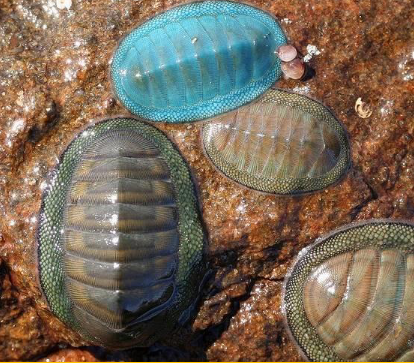
Polyplacophara
class of phylum mollusca; AKA chitons, most primitive, soft-bodied w/ external shell, shell composed of 8 plates
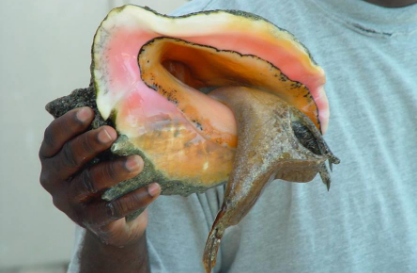
Gastropoda
class of phylum mollusca; single piece shell (if shell present), muscular foot for locomotion, name means “stomach footed”, exs. snails, slugs, sea conchs, sea snails
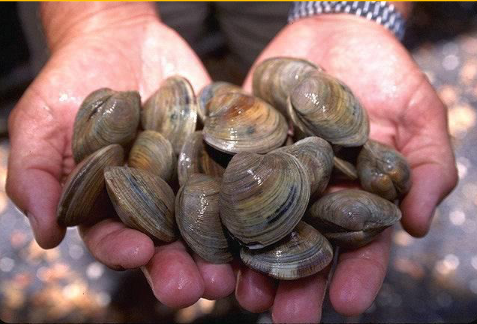
Bivalvia
class of phylum mollusca; AKA pelecypoda, two-part shells, muscular foot for digging, filter feeders, exs. clams, oysters, scallops, mussels

Cephalopoda
class of phylum mollusca; most advanced & highly evolved, muscular foot modified into tentacles, closed circulatory system, complex behavior & intelligence, exs. squids, octopuses, chambered nautilus, cuttlefish
What are Arthropoda?
the largest animal phylum (90% of all animals); name means “jointed feet”; 5 main classes (arachnida, crustaceans, diplopoda, chilopoda, insecta); chitin exoskeletons (lightweight, segmented body & jointed limbs, protostomes, open circulatory system, typically sexual, varied respiratory systems (book lungs, tracheal system, gills), segmented ganglia & ventral nerve cord, complete digestive system
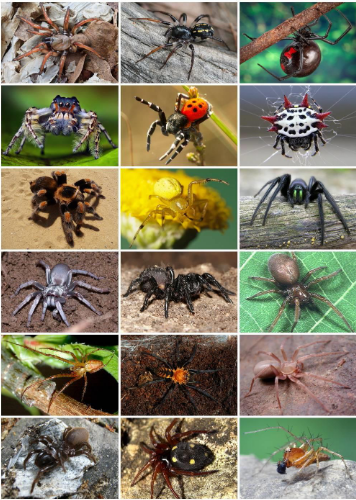
Arachnida
class of phylum arthropoda; typically have 8 legs (four pairs), body division: cephalothorax & abdomen, no antennae, jointed appendages, chitinous exoskeletons, many are predators or parasites, exs. spiders, mites, ticks
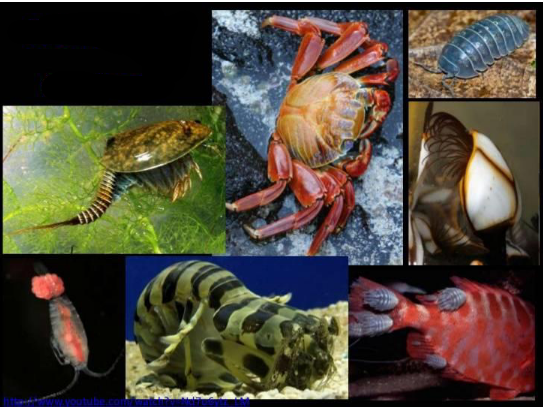
Crustacea
class of phylum arthropoda; mostly aquatic, body division: head, thorax, abdomen (sometimes fused w/ thorax —> cephalothorax), 2 pairs of antennae, many legs (swimming, walking), chitinous exoskeleton (often w/ calcium carbonate), important in aquatic food chains, exs. crayfish, lobsters, crabs, shrimp
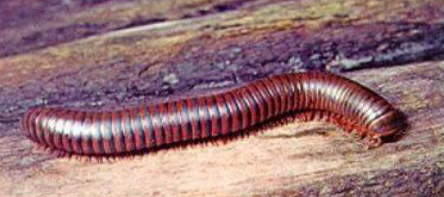
Diplopoda
class of phylum arthropoda; body has many segments, 2 pairs of legs per segment, slow-moving detrivores (eat decaying things), cylindrical body shape, chemical defenses, ex. millipedes
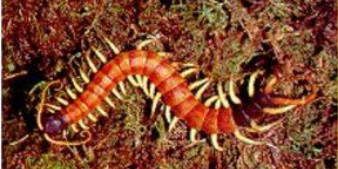
Chilopoda
class of phylum arthropoda; body has many segments, 1 pair of legs per segment, fast-moving carnivores, flattened body shape, venomous claws (forcipules), ex. centipedes
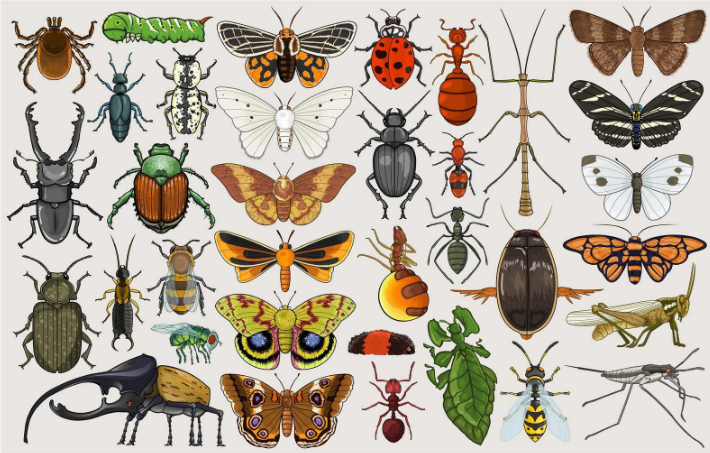
Insecta
class of phylum arthropoda; body division: head, thorax, abdomen, 3 pairs of legs (6 total), usually have 1 or 2 pairs of wings (some wingless), 1 pair of antennae, highly diverse, jointed appendages & chitinous exoskeleton, important pollinators & decomposers
What are Chordates?
complete digestive system, diverse nutritional strategies (carnivores, herbivores, etc.), closed circulatory system, gills (aquatic & amphibian larvae), lungs (terrestrial, amphibian adults), kidneys, complex internal skeleton (vertebrates), notochord remains in some primitive chordates, highly developed muscles, complex nervous system & brain, mostly sexual (some variation exists)
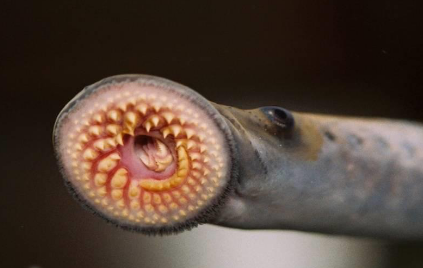
Agnatha
class in phylum chordates; “jawless fish”, lack hinged jaws, most primitive fish, parasitic (ex. sea lampreys) & scavengers (ex. hagfish), hagfish lack vertebrae but have skulls, sea lampreys invaded lakes
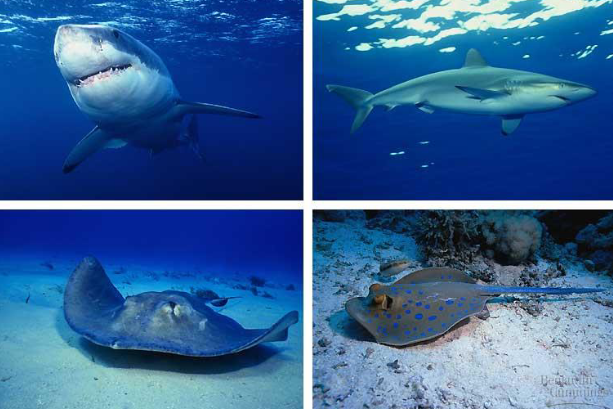
Chondrichthyes
class in phylum chordates; “cartilaginous fish”, mostly cartilage skeletons, vertebrates, limited floating ability, some must swim continuously, less complex compared to bony fish, exs. sharks, skates
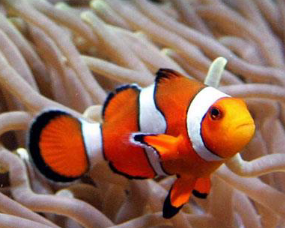
Osteichthyes
class in phylum chordates; “bony fish”, calcified bone skeletons, largest class of fish (population), swim bladders for buoyancy (floating), gills covered by operculum (allow for stationary breathing), complex fin structures (diverse swimming motions), exs. perch, trout, salmon, tuna, clownfish, seahorses, sea dragons
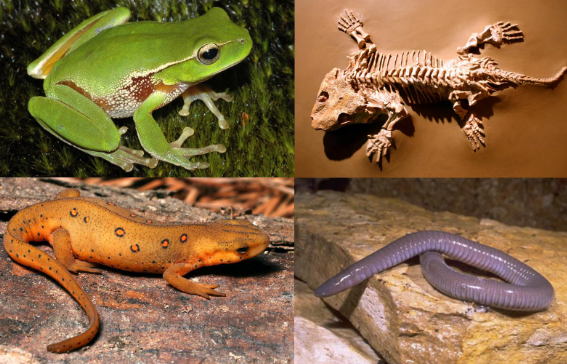
Amphibia
class in phylum chordates; first vertebrates adapted for land life, use water for reproduction, metamorphosis (aquatic larval stage, gills —> terrestrial adult, lungs), caecilians: legless, subterranean (live underground), resemble worms or snakes, exs. frogs, toads, newts, salamanders, caecilians
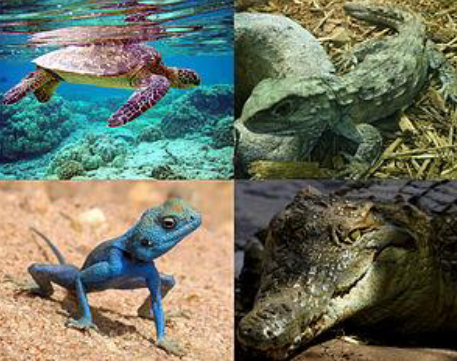
Reptilia
class in phylum chordates; fully adapted to land, dry skin w/ scales (prevent water loss), internal fertilization, amniotic eggs, ectothermic, can be venomous, exs. snakes, turtles, tortoises, alligators, crocodiles, lizards
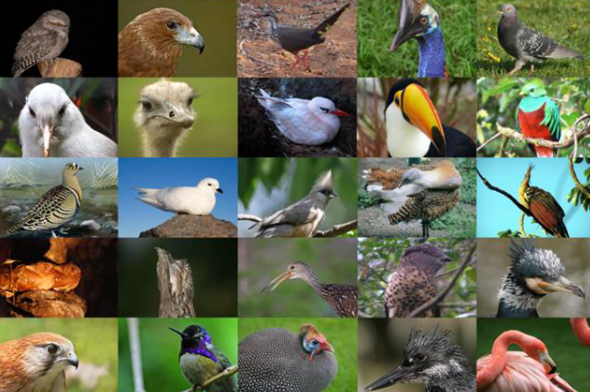
Aves
class in phylum chordates; “birds”, only surviving group of dinosaurs, feathers (different types, insulation & flight), lightweight & hollow bones, air sacs increase oxygen intake & dissipate heat, four-chambered heart, reduced organ number for less weight (1 kidney, 1 ovary in females), endothermic
Mammalia
class in phylum chordates; hair made of keratin, endothermic, produce milk, most demonstrate parental care, 3 major groups: monotremes, marsupials, & placental mammals
Monotremes
most primitive mammals, egg-laying, mainly in Australia & Tasmania, ex. platypus, echidnas
Marsupials
mammals that birth underdeveloped live young —> develop in pouch, most in Australia & Tasmania except opossums (North America), short gestation (pregnancy), long pouch development, exs. kangaroos, wallabies, wombats, opossums, koalas
Placental Mammals
largest group of mammals, embryos develop in uterus, connected to mother via placenta, placenta evolved from amniotic egg, efficient nutrient & waste exchange, longer gestation (pregnancy), exs. humans, lions, elephants, whales, bats, rodents, etc.
What are Echinodermata?
“spiny-skinned” animals; 5 major classes (asteroidea, ophiuroidea, echinoidea, crinoidea, holothuroidea); radial symmetry (adults, usually 5 part), bilateral larvae, water vascular system (movement), endoskeletons, regeneration, most are marine, sexual & asexual (through regeneration), complete digestive tract, open circulatory system (NO heart), skin gills, excretory diffusion, muscles present but not highly developed, no brain or centralized nervous system, nerves around mouth & arms
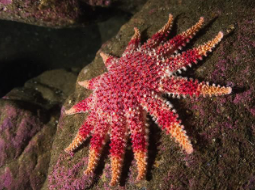
Asteroidea
class in phylum echinodermata; radial symmetry (adults), 5 or more arms, mouth on ventral (under) side, predators & scavengers, can pry open clams/mussels w/ tube feet, can evert stomach into prey (digest externally), can regenerate lost arms, water vascular system & tube feet (movement, feeding), exs. sea stars or starfish
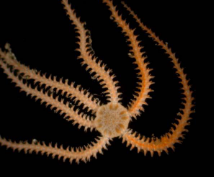
Ophiuroidea
class in phylum echinodermata; arms w/ small central disk, slenderer than sea stars, arms can be shed to escape predators (autotomy), can regenerate arms & can reproduce w/ arm fragments that have parts of central disk, scavengers & predators, ex. brittle stars
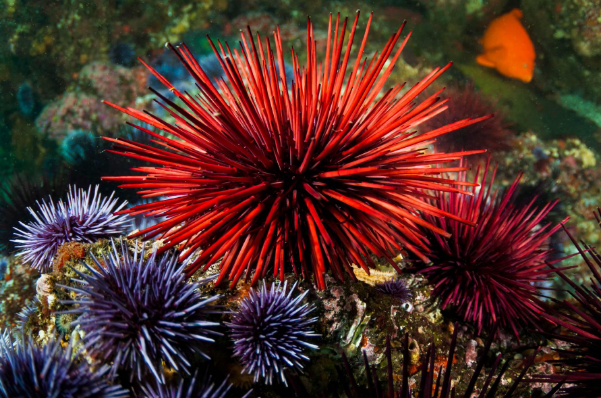
Echinoidea
class in phylum echinodermata; spiny skin, sharp (sometimes toxic) spines for defense, spines strong (protection) exs. sea urchins (move slowly, can be omnivorous, usually eat algae), sand dollars (flattened, burrow in sand)
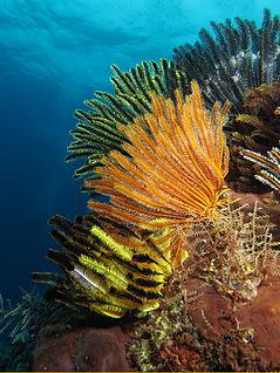
Crinoidea
class in phylum echinodermata; appear plant-like (stalk & feathery pinnules/arms), filter feeders, often attached to substrate by stalk, ex. sea lilies
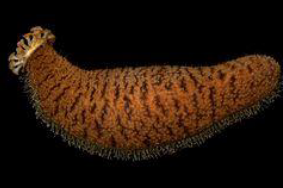
Holothuroidea
class in phylum echinodermata; elongated & soft-bodied, tentacles around mouth for eating, scavengers & filter feeders, can eject internal organs to escape predators, can regenerate organs, ex. sea cucumbers
Name the Phylum: Crickets or Grasshoppers?
Arthropoda
Name the Phylum: Scallop or Clams?
Mollusca
Name the Phylum: Hookworm, Ascaris, or Heartworm?
Nematoda
Name the Phylum: Sponge?
Porifera
Name the Phylum: Coral Animal?
Cnidaria
Name the Phylum: Leech or Polychaete Worm (clamworm)?
Annelida
Name the Phylum: Brittle Star or “Sea Lily”?
Echinodermata
Name the Phylum: Salmon or Tuna?
Chordates
Name the Phylum: Earthworm?
Annelida
Name the Phylum: Sea Anemone or Jellyfish?
Cnidaria
Name the Phylum: Sand Dollar or Sea Urchin?
Echinodermata
What phylum are scyphozoa & anthezoa in?
Cnidaria
What phylum are polychaeta & oligochaeta in?
Annelida
What phylum are condrichthyes & agnatha in?
Chordates
What phylum are asteroidea & holothuroidea in?
Echinodermata
Coelomate, acoelomate, or pseudocoelomate: human or frog?
coelomate (this one)
Coelomate, acoelomate, or pseudocoelomate: star fish (sea star) or sea urchin?
coelomate
Coelomate, acoelomate, or pseudocoelomate: earthworm?
coelomate
Coelomate, acoelomate, or pseudocoelomate: roundworm?
pseudocoelomate
Coelomate, acoelomate, or pseudocoelomate: planaria (flatworm)
acoelomate
Coelomate, acoelomate, or pseudocoelomate: spider or insect?
coelomate
What symmetry do adult echinoderms (starfish) have?
radial symmetry
What symmetry do adult annelids (earthworm) have?
bilateral symmetry
What symmetry do adult cnidaria (sea anemone) have?
radial symmetry
What symmetry do adult arthropoda (spider) have?
bilateral symmetry
Closed or open circulatory system: annelid (earthworm)?
closed
Closed or open circulatory system: chordate (human)?
closed
Closed or open circulatory system: arthropoda (grasshopper)?
open
Closed or open circulatory system: arthropoda (crayfish)?
open
What organ system would the protonephridia (flatworm) be in?
excretory
What organ system would the lateral lines (fish) be in?
nervous
What organ system would the ganglia be in?
nervous
What organ system would the radula (snail) be in?
digestive
Give an example of a monotreme
echidnas
Give an example of a marsupial
koalas
Give an example of a placental mammal
walruses
What 4 adaptations help birds fly?
air sacs, feathers, four-chambered heart, hollow & lightweight bones
Endothermic
warm-blooded, maintain body heat via metabolism & homeostasis; require energy/calories to maintain temperature
Ectothermic
cold-blooded, regulate body temperature via behavior (basking in sun, cooling in water), body temperature fluctuates with environment, require less energy
What is the function of a “pit” in a pit viper?
help snakes sense heat from warm-blooded animals, allow snake to track prey
List three pit vipers found in South Carolina
cottonmouth, copperhead, timber rattlesnake
How does the water vascular system function in echinoderms?
water-powered network that helps echinoderms move, eat, breathe, and/or get rid of wastes